






In this the second segment we travel around Tasmania for 7 weeks 30 November 2008TasmaniaTowards the end of the last ice age, 12,000 years ago, the rising oceans flooded the low lying plains linking the small chunk of land at the southern end of Australia.
True European settlement didn't
start until 1803 when the British, struck by the intense and varied
beauty of this delightful isle decided it would be a good place
to stow the unwanted flotsam and jetsam of their society. They set
up a penal colony which until its closure in 1877 was the antipodean
repository for 75,000 re-offending convicts.
8 December 2008 While we were on the Apple Isle, as it is affectionately know, the population reached the grand milestone of half a million souls though we cannot claim any personal credit for this boom. This 500,000 is a mere 4% of the population of the Netherlands. With a total area of over 68,000 sq.km Tasmania is the smallest of Australia’s 6 states and over 1.5 times of the Netherlands this equates to approximately 7.3 people per square kilometre. Compared to the Netherlands 466 people per square kilometre this makes Tasmania one of the great destinations to get away from the maddening crowds. That is, of course, unless they follow you. We were actually delighted to discover that while we were in Hobart some of Brisbane friends decided to make a flying visit and meet us there.
We enjoyed a few days of feeling like we were back at home before half of them returned to Brisbane and we continued to travel around Southern Tasmania with our BFF's Barbara and Hillel.
The island is like a crumpled sheet of paper, small when you look at it, but if you were to iron out all those crease would cover 4 times the area. Thus the 5,000 odd kilometres we travelled in Tasmania didn’t get us very far. From point A to point B of any given destination was little more than a kilometre as the crow flies. For us to get there towing a 3 tonne caravan we needed to traverse 5 kilometres of steep, sharp U bends up the face of each hill then down an equal number on the opposite side, thus travelling 10 times the actual distance.
26 December 2008 It was a long and winding road. We had travelled over 20 kilometres of dusty, unsealed track to discover at its end the once prosperous, now nearly deserted, township of Trial Harbour.
During the boom time of tin mining in the area, this was a major port and an integral part of the industry. The township of over 200 boasted two pubs and a blacksmith’s workshop. Today it is the permanent home to a mere 14 souls and a scattering of fishing huts in various states of disrepair. A few old 4WD vehicles lie rusting away among the button grass. Adjacent the mouth of the river that feeds the town’s water supply we found the History Room as recommended by a nice young couple, Jim and Louise, whom we met while free camping at Lake King William near Lake St. Claire. It’s open 7 days a week to all and sundry. On view among other things is a photographic history of the harbour and an intriguing collection of rocks, fossils and relics from a foregone era. Among the collection is a broken china platter from the 19th century unearthed when the foundations of a more recent home were dug, old cast iron implements, the mummified foetus of the extinct Thylacine (Tasmanian Tiger) and the mandible of a sperm whale.
At the entrance to the township the locals have established a free camping area complete with a well-maintained eco-loo. But their hospitality does not end there. As we were settling in for the evening on the 24th of December we heard the undeniable “Ho, Ho, Ho”, of Santa Claus recently arrived from the North Pole and accompanied by a couple of helpers and one rather short-legged reindeer. They came baring gifts; a bag of sweets each for the half a dozen lost souls who found themselves in this remote patch of Tasmanian’s wild, West Coast. If you don’t believe me you can see the evidence here.
To show our appreciation, Santa did not leave empty handed. Though not the kind of people who celebrate Christmas it is our tradition at this time of year to give the gift of ‘gelt’ (gold), though the only kind we had on hand was the liquid type; XXXX Gold, a Queensland beer. Santa graciously accepted our gift but said he would keep it for later as he was afraid of loosing his sleigh licence if caught DUI. The Wild West coast lived up to its name that evening as a storm blew in. We had to secure our satellite dish for fear it would take off like a giant frisby. The strong wind rocked us to sleep in our caravan perched on the cliff edge overlooking the ocean with nothing between us a Paraguay bar some jagged rocks and an abundance of giant kelp. Come morning the weather had improved immensely and as we sat basking in the warm sunshine two more locals approached with a gift of home made rocky road, rum balls and coconut ice and I must say it went down a treat with our morning espresso. So to all of you who say, “bah, humbug” to the holiday spirit, let me tell you it is alive and well in this lonely part of our great continent. 14 January 2009 As we rolled off the Spirit of Tasmania on our return to the mainland, three days ago, I swear I heard our Landcruiser emit an audible sigh of relief at the prospect of getting out of second gear for the first time since our arrival at Devonport seven and a half weeks earlier.
Snow capped throughout much of the year, we realised being in Tasmania during the summer, the weather would be milder than the tropical swelter we experience in Brisbane. Most days saw us in long-johns, overcoats and knitted beanies. The coldest morning we recorded on our external thermometer was 1.2 deg C on the highland lakes. Some days we were luck to see the sun shine at all. On days we did, the wind chill factor reduced the temperature outside by at least 10 deg C.
I could count the number of days the temperature rose above 20 degrees Celsius on one hand of a three-toed sloth. The first of these rare occurrences was while we were in Strahan on the West Coast. It had been a full month since we had first arrived and the sight of this bright yellow ball in the sky lulled me into a false sense of security. In the excitement of finally thawing out, I was perhaps a tad hasty in stripping down to my shorts and tee shirt before going walk-about at Ocean Beach. Unfortunately I failed to realise how cold the winds rising from the Antarctic could be. They whipped up a sandstorm effectively defoliating the winter fur from my legs thus saving me having to wax them but being preoccupied photographing interesting pebbles and shells on the beach, as is my habit, I failed to take heed and promptly caught my first cold in years.
The next time it was hot enough to bare my lily-white skin was by the shore of Lake Barrington otherwise known as ‘Bogan Central’ where entire families have camped in tent cities on the grassy knoll in the same spot every summer for the past 30 years. And the last time was on January 10 when it soared to 28 deg C, so hot that the newspaper headlines broadcast “summer finally arrives in Tasmania”. It just happened to be our last day. Bloody typical!. It doesn’t pay to complain to loudly, I’ve learned. Yesterday was our second day back on the main land and it saw the mercury soar to a bitumen-melting 38 deg C. Today they forecast 39 deg C. However the hottest January day in Melbourne was recorded in 1939 when the thermometer recorded 45.6 deg C, interestingly many decades before the catch phrase “global warming” was ever invented. This morning the minimum temperature of 24 deg C was much hotter than most of the maximums we encountered in Tasmania. As we are free camping at the unspoilt Clifton Springs on the Bellarine Peninsular I think I will spend my birthday wallowing in the cool, clear waters lapping the shoreline. 26 January 2009 I love a sunburnt country In 1907, at the age of 22 a young lady named Dorothea
McKeller penned her immortal “My
Country”, my favourite Australian poem. With a land area of over 7.7 million square kilometres, Australia is the sixth largest nation after Russia, Canada, China, the USA and Brazil yet it has a relatively small population of only 21 million. As the only nation to occupy an entire continent, Australia is the flattest and driest inhabited continent on earth. Its interior has one of the lowest rainfalls in the world and about three-quarters of the land is arid or semi-arid, yet it has extremes of climate and topography. There are rainforests and vast plains, desert and fertile crop lands. About one third of the country lies in the tropics. Australia’s lifestyle reflects its mainly Western origins, but Australia is also a multicultural society that has absorbed over six million settlers from almost 200 nations. By the end of WWII the population was still only 7 million with around 90 per cent born in Australia. Today 40% of Australians are migrants or the first-generation children of migrants with half of them from non-English speaking backgrounds. Whilst most integrate well into Australian society some import their bigotry and grievances from their old homelands. Some, unfortunately, would prefer us Australians to change our way of life to meet their laws and morals. International news reports this week highlighted the violence at the Australian Open Tennis tournament when fans from Serbian and Bosnian backgrounds clashed in a destructive feud over issues imported from their native countries. This is not the sort of publicity Australia needs. I believe we should pass a law that all new immigrants be made to leave their baggage at the door. If you choose to migrate or accept asylum in Australia you should choose to accept the way of life Australia offers. Australia: love it or leave it! Although Australia’s official language is English, the more common language spoken by the vast majority of those populating the out urban fringes is Strine. It is a form of English, with some unique colloquial and slang expressions spoken with a strong nasal twang. To learn how to speak Strine pinch your nostrils closed between the forefinger and the thumb and read the following out loud “G’day mate, ow ya goin? Dja ava goodweegend?” (translation: Good day mate, how are you going? Did you have a good weekend?) As one of the least populated continents Australia is one of the leading Nobel Prize–winning countries in per capita terms, mainly in the fields of science and medicine. Among them were:
Australians have also invented many of the things in daily use around the world today. Foremost among them are:
Oh, and did I mention the wine cask? On 26 January each year Australians celebrate Australia Day. It marks the date in 1788 when Captain Arthur Phillip, of the British Royal Navy, commanding a fleet of 11 ships, sailed into Port Jackson (Sydney Cove). Phillip formally took possession of the eastern part of the continent for England ignoring the fact that it was already inhabited by indigenous people he claimed it to be terra nullius (uninhabited land) although Aboriginal people began living on the continent 50 000 to 60 000 years ago This year, on Australia Day, we will be celebrating it in true Aussie fashion. Like most the 70 per cent of the population living along the eastern seaboard and the south-eastern corner, we will be spending the day at the beach. Somewhere along the 36 735km of coastline you will find us having a BBQ, a few cold tinnies (beer) and maybe a glass or two of good, old, Aussie cask wine.
2 Febraury 2009 Out of the frying pan and into the fire. It has been over a hundred years since the region has seen so many consecutive days with temperatures of 40C (104F) and they had to wait till we arrived to turn up the heat. In Victoria and South Australia the apocalyptic heat has reeked havoc. Railway lines have buckled leaving hundreds of commuters stranded. Power lines and transformers have melted throwing entire suburbs into blackouts. Fires, fuelled by extreme heat and strong winds, have devoured hundreds of hectares of bushland leaving numerous families homeless and dozens of poor souls have expired from heat related causes. Meanwhile we arrived in Whyalla, on the Eyre Peninsular, during the first day of the heat wave. As the temperature reached over 44C we abandoned our practice of free camping so as to be able to plug into power and run our air conditioner. Even with it running all night the temperature inside our caravan barely dropped below 30C. The next day we motored on south hoping to out run the searing heat only to discover as we opened the car doors in Cowell, that it was like opening the door to a furnace. The hot winds parched our throats and singed our nasal hairs. After making our morning espresso in the caravan, while parked in a shady side street, we beat a hasty retreat to the air-conditioned comfort of our car to drink it. You didn’t think I would leave my espresso machine at home did you? Prior to departing we invested in a 2.4kW inverter so as to be able to run the most important things in life, the espresso machine, my laptop and umpteen battery chargers. It was the best investment we ever made. After departing Cowell it was only a short drive to a beautiful stretch of beach along the coast towards Port Gibbon. As we attempted to find some respite from the heat by paddled our sweaty feet in the delicious turquoise waters at Flat Rock an insatiable urge overtook us and we were compelled to shed our clobber and dive into the alluring, cool blue waters. The steam rose from our bodies as if from hot ingots and the water around us virtually sizzled. This stretch of Australian coast line is notorious as a haven for sharks. Hubby nearly jumped out of his skin when he thought he’d spotted two white pointers. Lucky for him it was only I doing the backstroke. Fortuitously us we went undetected on this deserted stretch of the Spencer Gulf, lucky too that school resumed after the eight week summer break only the day before or we may have scarred the little children indelibly.
At Arno Bay that afternoon I threw a load of washing into the machine and I swear as I hung it on the rotary clothes hoist the first item was dry by the time the last item was pegged out. Upon returning to the caravan to shower, I opened the cold water tap and it was hotter than the hot water. Even the refrigerator couldn’t keep cold and that afternoon my G&T was consumed at room temperature. The next day started out ominously. At 5am the thermometer had only dropped to 35.5C and the sun had not yet risen. It was all down hill from there. Along the way we witnessed a poor shingle-back lizard attempting to cross the road, he had to extradite each foot from the melting bitumen, as if he’d stepped in sticky chewing gum, slowing his already snail pace progress across the road. Lucky the traffic was light and we were patient enough to wait for him to reach the other side. Arriving in Port Lincoln at midday the temperature was already over 43C. Unfortunately the contents of our wine cask was as hot as mulled wine after sitting in a closed caravan in the full sun all day. I know our friends, Ingrid and Richard, are gasping in horror at the mere thought of people drinking wine from casks but in our defence it is Barossa wine in the cask and we have consumed all the good bottled stuff we acquired at Kabminye. (At this point I wish to advise Ingrid and Richard to avert their eyes, as what I am about to write is pure sacrilege to wine connoisseurs around the world.) We were almost tempted to follow the lead of hotels in the Northern Territory and put our red wine (gasp, horror) in the fridge. There is a cool change due very soon. How do I know this? I’ve just laundered the winter quilts and packed them away for the duration. I’ve been putting it off for weeks but now I’ve gone and done it, it’s bound to get very cold. 10 February 2009 Contraband
Camped on the cusp of the Nullarbor Plains, the mercury in our caravan had surged to over 44C; our sweat beads had sweat beads. So what did we do? To exacerbate the heat, we baked a cake of course. Not just any cake either, but a Honey Cake. I realise Honey Cake is traditional fare for Rosh Hashanah, (Jewish New Year) and it’s still a good eight, or so, months away but I need to conceal within it some contraband while crossing state lines. “What contraband?” I hear you ask. Don’t worry, there is no hash in my honey cake. The contraband I speak of is, of all things, honey! In Australia it would appear that bees couldn’t fly across the imaginary border between states, there is no Bee Proof Fence. The only way they have of smuggling themselves across state lines is via hapless travellers such as we. We’ve been caught out before. In September, at Mt Ebenezer near the border between the Northern Territory and S.A. (South Australia), we were informed that to prevent the spread of fruit fly we would be forced to dispose of all our fruit and vegetables before we cross. Having only just bought a few kilos of apples we pulled up at a convenient rest stop by the side of the road ate salad sandwiches and set a pot of apples on the stove to stew. The caravan smelt of apples and cinnamon for weeks afterwards but we did enjoy that compote on our rolled oats for breakfast well after passing into S.A. As we drove through Victoria a few weeks later, it seemed that every other day we passed in or out of one fruit fly exclusion zones or another. After having thrown out bags of food the first couple of times we ultimately decided to conceal our contraband. There were onions in hollowed out loaves of bread, oranges squeezed into juice bottles, and I won’t even mention where we concealed the cucumbers. So rather than break the law this time or, heaven forbid, waste good food we are endeavouring to consume or conceal our illicit contraband before we cross into Western Australia. That bottle of honey cost me a good $5 and it sat virtually untouched in my cupboard until now. In this current GFC (Global Financial Crisis), I’ll be buggered if I’m going to hand it over to some quarantine inspector for him to take home to his wife. If you wish to visit us in the near future ask the state police which correctional institution houses hardened smugglers such as we. Contraband Honey cakeMix together in a large bowl;
Slowly blend into this mixture the following dry ingredients;
Pour the very wet mixture into greased and paper lined tin 20cm x 30cm Bake in a moderate oven for about 1 hour or until it tests dry when tested with a wooden skewer. 26 February 2009LookinupAfter traversing the treeless plains of the Nullarbor we discovered the most beautiful beaches in the world at Cape Le Grand and Duke of Orleans Bay.
Wharton Beach, Cape Le Grand We now find ourselves on the West Coast of Western Australia (WA) where vast tracts of land along the coast have been coated in wall to wall McMansions. From Yallingup to Joondalup there is barely a yard of virgin coastline left unscathed.
Across Australia the trend is to give towns Aboriginal names. In the local Aboriginal language of this region of WA the word “up” means, “place”. For instance “Joondalup” means "place of whiteness or glistening" and "Yallingup" means “place for loving”. I’ve thought of some new town names for when the Government of WA runs out of ideas. Giddyup: A place with a good turf club. I’ll let you know if they take me up on any of these suggestions. 12 March 2009 Missed it by ..... that much! As we travel around Australia we have learnt to deal with disappointment. To date, we have had only a few determining factors that have dictated our route and timetable. But each in its own time has meant some events have been missed. The determining factor we have at the moment is the need to be in Darwin by the first week in May as we are flying from there to the UK. After arriving in London we are renting a campervan for 4 weeks and travelling around the UK then we fly to Ireland to spend two weeks with Hubby’s brothers and their wives who are travelling from Israel to meet us there. As such we have a schedule to adhere to and it has put us in Coral Bay this week. Unfortunately the whale sharks are only just arriving and the real tours that take people out to swim with them only start in ernest in two weeks time. It has long been a dream of mine to swim with these magestic giants, the world’s largest fish species. Today I paid a kings randsom to take a trip out to the reef on the off chance of them finding the few souls who have arrived already. However with only a handful accounted for in a this 5076 sq km section of ocean, larger than some small European countries, I realised my chances were pretty slim. And once again I was left disappointed. Since departing Brisbane we have missed other momentous events such as: the World famous Tesselaar Tulip Festival. the Phillip Island Grand Prix. the annual Pier to pub swim Lorne. Adelaide’s famous German festival, the schutzenfest. Port Lincoln’s Tunarama. Porongurup’s (yes that is how you spell it; it not Pornogroup mispelt)wine summer festival. And most recently Wagin’s Woolorama. One event we wish we had missed was the one that we faced at Shark Bay. We discovered our arrival has coincided with the most prolific black fly breeding season in years. For weeks millions of sticky black flies have been involved in a mass bonking orgy. I am convinced they have been tracking our progress on my website and have timed their efforts to ensure that each and every one of them produce their 500 odd offspring to hatch just as our caravan approached the peninsular.
Although it means viewing all the beautiful scenery through the honeycomb of our fly nets, we cannot set foot outside without wearing them over our heads, as the flies are hell bent on accessing every unprotected orifice. They fly behind the lenses of our glasses and stick to our eyeballs, they fly up our nostrils and into our ears and if we should make the fateful mistake of opening our mouths to speak, they take this as a personal invitation to attack our tonsils. Even with our fly nets firmly secured with the drawstring tighten just short of strangulation point they still manage to penetrate the perimeter in an attempt to drive us completely mad. I am convinced that at the back of my neck there is one fly holding up the edge of my net, allowing his comrades access. When we return to our vehicle we have to whip ourselves into a frenzy of self-flagellation, as if part of the Shi'a Muslim religious ceremony, Ashura, to rid ourselves of as many of the millions of flies as possible that have hitched a ride on our backs, arms, legs etc. Still thousands make a hasty invasion of our car and we have to spray every surface with fly spray so that we can remove our nets once inside. These are no ordinary flies. They have superglue on the soles of their many feet and adhere to any surface they land on. They are not timid either, a simple wave of the hand does not phase them. We literally have to wipe them off our skin. Like a snow plough shifts snow so our hands scythe flies from every exposed surface.
We should have recognised the warning signs. As we approached the peninsular the discarded beer cans that ordinarily litter the sides of the roads in Outback Australia were gradually being replaced by spent tins of fly repellent.
Whilst camped at the beach at Fowlers Camp on Shark Bay we found sanctuary from the flies by submerging ourselves in the clear aqua water. Unfortunately the bay received its name for an obvious reason and Hubby was the first to spot a shark swimming close to us. It was only a small specimen, more the ideal size for a meal for us, than we for him. Whilst Hubby chose flight over fight, I preferred to take my chances with the sharks than have to suffer ONE MORE FLY. 17 March 2009A few of my favourite things
When we decided to embark upon our epic journey around Australia there were a few things I knew I couldn’t live without, other things I thought I couldn’t and have discovered I can, and yet more things I had no idea about but brought with us …just in case. Some have proved invaluable and others were packed into the caravan when we left Brisbane and have yet to see the light of day such as hubby’s fishing rods. He has come to the realisation that the cost of bait is more that the cost of fish, cleaned and filleted at the supermarket. A lot of outdoor things get very little use as, if it is not too hot or too cold to sit outdoors, there are plagues of flies or mosquitoes that make it unpleasant. I have been asked many times what things are essential to take when doing the “Grey Nomad” thing. The list I have compiled is not in order of importance. Hubby and I couldn’t agree as we have different priorities. Also not everyone will agree as each person has different needs and levels of tolerance. When buying the caravan we had only a handful of items high on our list of ‘must haves’.
We have added a number of things to make our life comfortable. They include;
The Rules of Cricket the New Aussie Fashion Statement We have recently arrived in the Kimberley area of North Western Australia, just at the tail end of the wet season. Currently thunder rumbles and storm clouds threaten to dump a torrent of rain upon my freshly washed laundry that I’ve only just hung out to dry. It looks like the clothes drier will get a work out later this evening unless we get a reprieve. Today we are in Derby, home to the iconic Boab trees that appear to have been planted upside down. They are currently heavy with their strange, bulbous, fury fruits dangling like Christmas baubles from spindly branches. The plus side of travelling in the off season is that we are here ahead of the hordes of tourists who descend upon the region in droves every dry season. The down side is that it is not only still very hot but more humid than a Swedish Sauna. The upside is that there are plenty of good sites at every caravan park and they are on low season tariffs still. The down side is that the Gibb River Road, which we were intending to traverse as far as the Windjara National Park is still closed in sections because of the rains. Looks like we’ll be in Darwin weeks ahead of schedule at this rate. They say necessity is the mother of invention and because of the heat and our habit of free camping with no power connection I have had to be inventive. I have devised a new portable evaporative cooler. I took a much-loved sarong that I bought during my first ever visit to the Woodford Festival held in the Queensland Sunshine Coast hinterland during the last week of December each year. I soaked the sarong in a basin of water, wrung it out then draped it over my hot naked body. (This is best done in private). Usually if there is just a whisper of a breeze it acts as an evaporative cooler, causing my body temperature to return from sizzling hot to something approaching normal. See my concept design here. 
But my new invention needs some improvements. The single length of fabric is only suitable for use when reclining. To cover the entire body so that you can walk around and do things, I suggest stitching two lengths of fabric together or using a single bed doona cover.
To keep the fabric hydrated I tried many options, I found the water bucket on the head gave me a headache after an extended period so I suggest inserting a water bladder.
Then all you need do is jazz it
up with some funky fabric and you have the all new Body Evaporative
Reticulated Cooling Aid or "BERCA".
Do you think it will catch on? We eventually made it to Darwin in plenty of time to find a storage facility to store our caravan and car then catch our flight to the UK. See our blog of the UK and Ireland here. Or skip it and continue with our Grey Nomad blog part three here.
|
Copyright
© Susan Segal. All rights
reserved.
This site was designed and developed by Susan Segal and was last updated April 2013
For
the best viewing resolution please
alter Display Settings in Control
Panel to 1024x768 pixel format or higher.

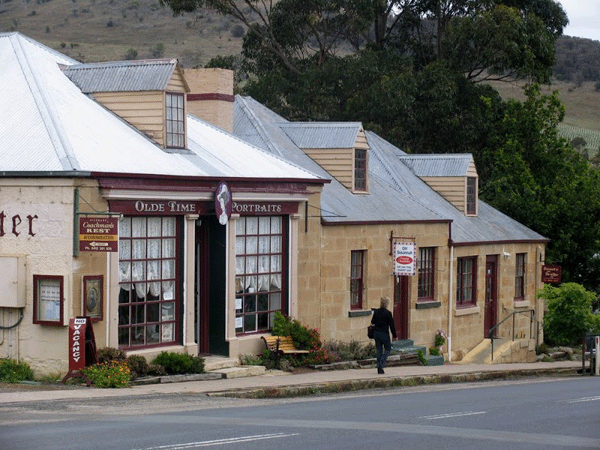


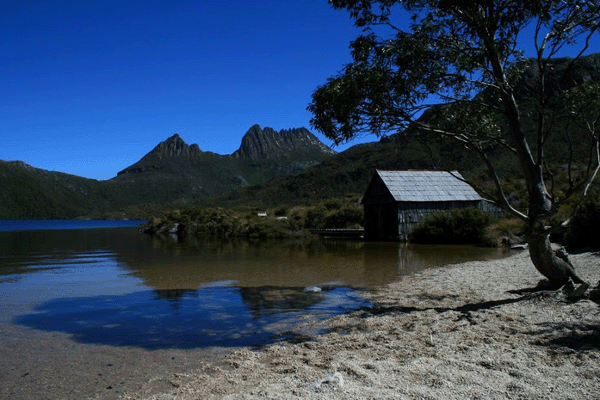
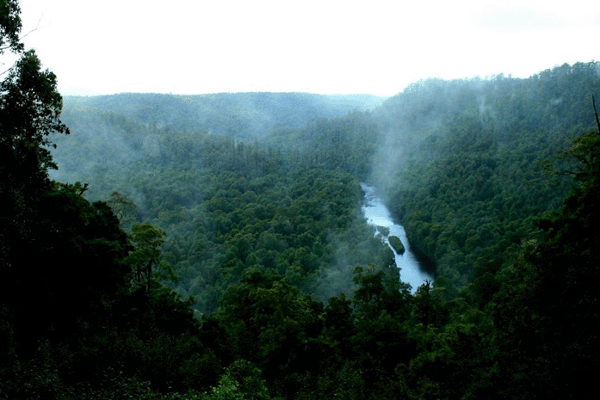
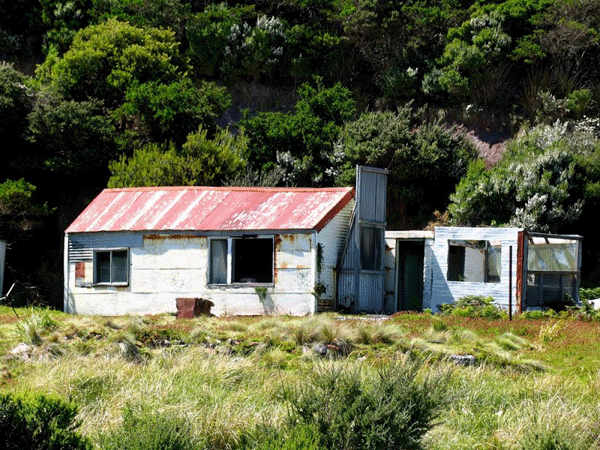
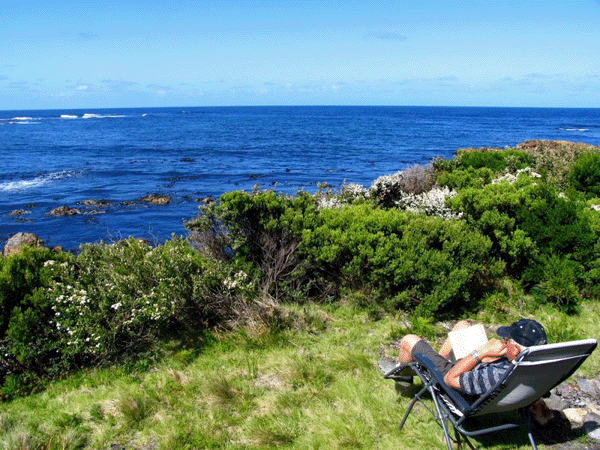
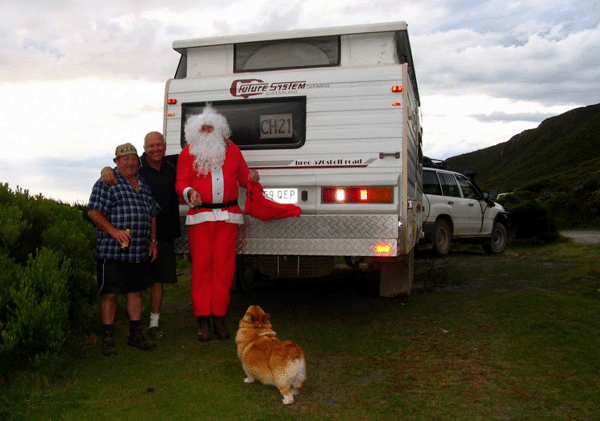
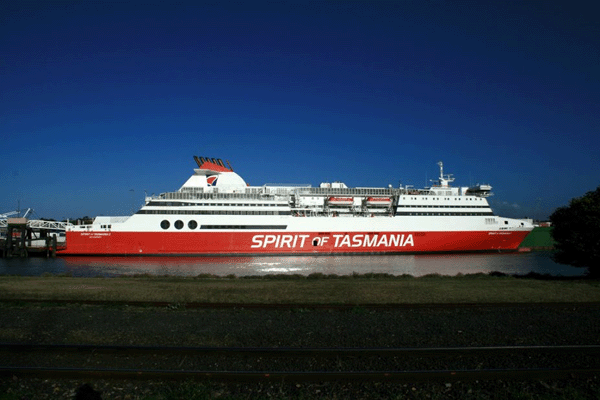

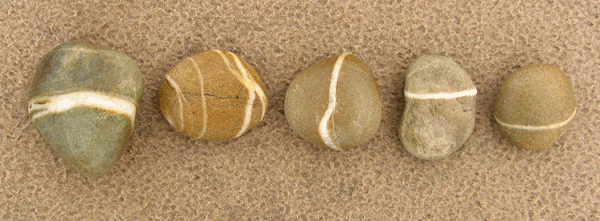

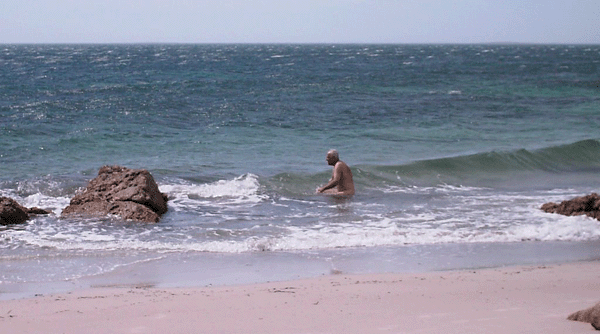
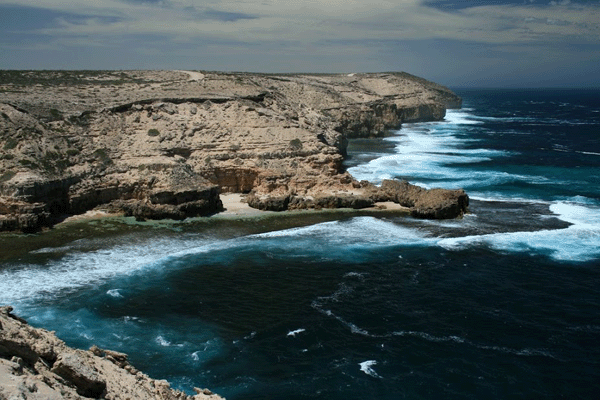
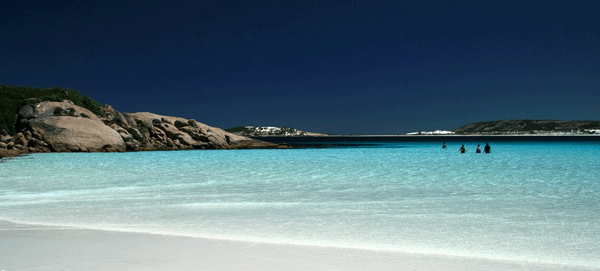
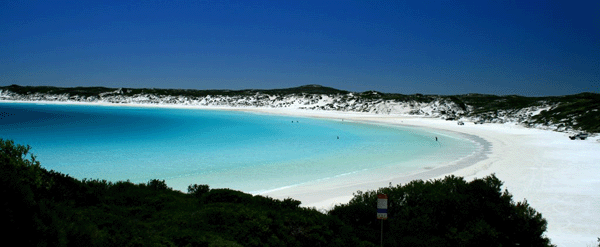



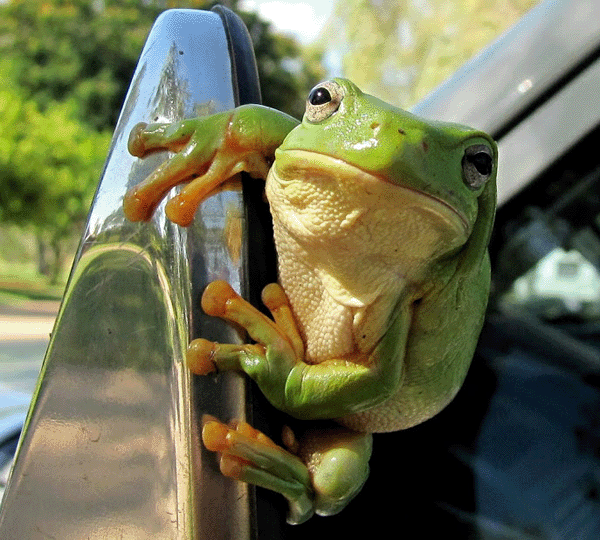



 .
.